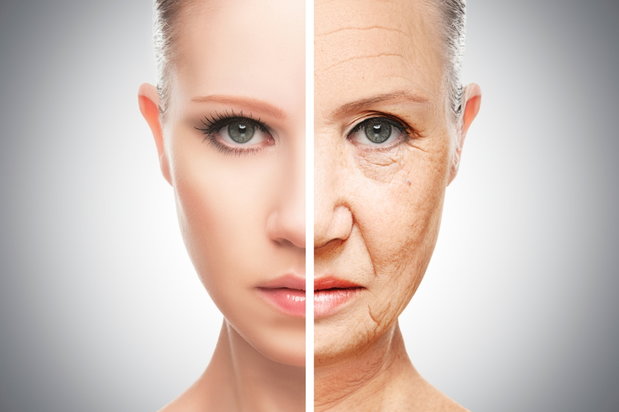Whether you are 25 or 55, addiction to drugs and alcohol often results in a lifetime of destructive behavior.
But contingent on your age, new studies shed fresh light on the wide spectrum of how addiction manifests itself. Age can influence abuse relative to the choice of drugs and the severity of dependency.
Current research exposes evidence that drug abuse differs at various stages of life and these revelations have scientists, treatment centers and the general public distressed and fascinated all at the same time.
The Statistics
The National Association of Drug Abuse examined the number of admissions to publically-funded substance abuse treatment programs in 2008[1].
The table below indicates that ages 25-29 represent almost 30% of all individuals seeking help for their addiction. There is also a high rate of dependence among “baby boomers” in their 50s who are searching for assistance.
|
Percentage of Admissions |
Age Group |
|
14.8 |
25-29 |
|
14.4 |
20-24 |
|
12.6 |
40-44 |
|
11.7 |
35-39 |
|
11.5 |
45-49 |
|
11.3 |
30-34 |
|
10.4 |
50-59 |
|
7.5 |
12-17 |
|
4.1 |
18-19 |
|
1.2 |
60-64 |
|
0.6 |
65 or older |
Where Does It All Start?
Reviewing the figures in more detail, researchers discovered that “most people use drugs for the first time when they are teenagers.”
This is alarming news since the age a person first connects with illegal drugs proves to have long term implications on their addiction.
For example, the 2012 National Survey on Drug Use and Health data indicated that among adults who first tried marijuana at 14 years or younger, 13.2% were classified with illicit drug dependence or abuse[2, 3]. This percentage was six times higher than that for adults who first used marijuana at the age of 18 or older.
In addition, the National Survey investigators found that “more than half in all age groups of new illicit drug users begin with marijuana.”
As marijuana use becomes legalized and more accepted nationwide, the question remains on how it affects the jump towards other illegal substances.
Our Youth
The most commonly abused drug among 12th graders is marijuana (21.4% of high school seniors reported using marijuana in the past 30 days whereas 19.2% reported smoking cigarettes).
When examining a wider age group of younger adolescents, the trend continues[2]. In 2013, marijuana was the most commonly abused drug among youths ages 12 to 17.
Another popular drug amongst high school seniors is “K2” or “Spice,” the second most abused drug in teens[4]. “K2” refers to a wide variety of herbal mixtures that produce experiences similar to marijuana. Most parents have little knowledge about this alternative to smoking pot and have rarely heard these slang terms used.
Happily, there is some good news to report regarding our youth and drugs. Both alcohol and cigarette use in 2014 are at their lowest points since 1975. The following data is also reported:
- Together, underage (ages 12–20) and binge drinking declined in 2014[4].
- Teen smoking is declining rapidly. The rate of past-month cigarette use among 12- to 17-year-olds decreased from 13% in 2002 to 6.6% in 2012[3].
- However, in 2014, more teens use e-cigarettes any other tobacco product[5].
Today’s Baby Boomer Population
Regrettably, not all the news is good for all age demographics. The National Institute of Health identifies that “there has recently been a substantial increase in the percentage of people 50 and older abusing illicit drugs[6].”
The facts are staggering:
- Current illicit drug users aged 50-59 more than tripled between 2002 and 2012 to 3 million people.
- Hospitalizations (including visits to emergency rooms) have increased more than 130% in 55-64 year-olds from 2004 to 2009.
Why is this disturbing behavior in baby boomers so prevalent? Experts cite the fact that these adults born between 1946 and 1964 showed rates of unlawful drug use in their youth. Consequently, drug use in teenagers is considered a significant risk factor for use later in life.
The top three most abused illegal drugs for this 50+ age demographic are:
- Marijuana
- Illegal opioids, such as heroin
- Illegal stimulants, such as cocaine
Age and Heroin
Many experts are most concerned specifically about the use of heroin in people over 50 years old. Published research in England examining 200,000 heroin users was the first to record age trends in opioid users' mortality.
In this largest ever study of heroin user deaths, (which is the first to record age trends in opioid users' mortality), it was found that older users of opioids (such as heroin) are 27 times more likely to become a victim of homicide than the general population[7].
Opioid users in this investigation were also six times more likely to die prematurely than people in the general population. Almost one in ten of these deaths are due to suicide.
The authors of this groundbreaking research stated, “…the risk of overdosing increases as they get older. This group is also one of the most vulnerable to homicide.”
What We Can Learn
There are numerous studies and an enormous amount of statistics on drug and alcohol abuse. The key is to distinguish specific addictive tendencies that can be rehabilitated and develop specific strategies relevant to diverse age groups to promote sobriety.
Every medical expert agrees that during the teenage years the brain is still developing. This increases the probabilities that adolescents are more willing to take risks and are influenced by their peers. In some cases, this may lead to a greater risk of drug trial, abuse and addiction.
Furthermore, the analyses of multiple research documents demonstrate that several health inequalities between users and the general population widen as the population matures. Older adults cannot be forgotten.
The objective is to provide options for sobriety, recovery and assistance that relates to the distinctive needs of these separate age groups.
If you or someone you know is seeking help with substance abuse or addiction, please visit our directory of treatment centers or call 866-606-0182 to start the path to recovery today.
References:
[1] (March 2011). Drug Facts: Treatment Statistics. National Institute on Drug Abuse. Drug Facts: Treatment Statistics. Retrieved from http://www.drugabuse.gov/publications/drugfacts/treatment-statistics
[2) (September 2014). National Survey on Drug Use and Health: Summary of National Findings. U.S. Department of Health and Human Services Substance Abuse and Mental Health Services Administration, Center for Behavioral Health Statistics and Quality. Retrieved from http://www.samhsa.gov/data/sites/default/files/NSDUHresultsPDFWHTML2013/Web/NSDUHresults2013.htm
[3] Conference Archives. National Alliance for Drug Endangered Children. Retrieved from http://www.nationaldec-conference.org/
[4] (January 2014). Drug Facts: Nationwide Trends. National Institute on Drug Abuse. Retrieved from http://www.drugabuse.gov/publications/drugfacts/nationwide-trends
[5] (2014). Results on Drug Use. Key Finds on Adolescent Drug Use. Monitoring the Future National Survey. Retrieved from http://www.monitoringthefuture.org/
[6] Prescription and Illicit Drug Abuse: Illicit Drug Abuse. National Institute of Health, Senior Health. Retrieved from http://nihseniorhealth.gov/drugabuse/illicitdrugabuse/01.html
[7] Piece, Matthias et al. (2015). National record linkage study of mortality for a large cohort of opioid users ascertained by drug treatment or criminal justice sources in England, 2005–2009. Drug & Alcohol Dependence, 146. Retrieved from http://www.drugandalcoholdependence.com/article/S0376-8716%2814%2901844-4/abstract








